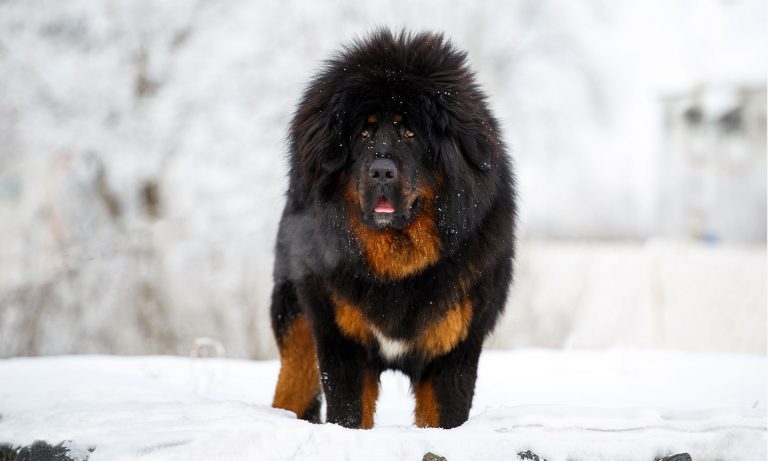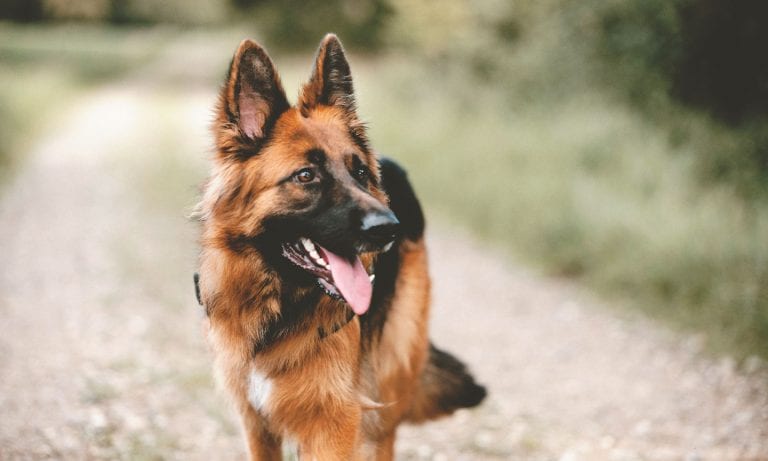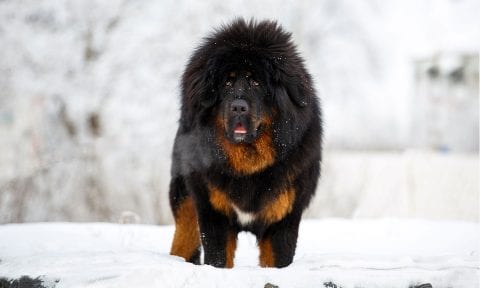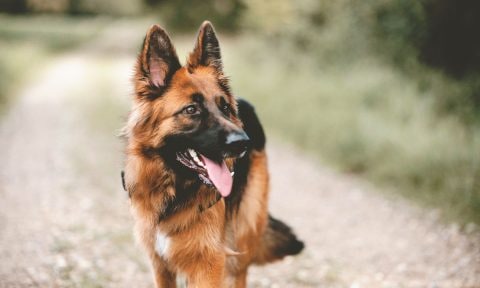Tibetan Mastiff vs German Shepherd

Breed Snapshot
Best For
The majestic and independent Tibetan Mastiff makes a devoted family pet. Ranking among the largest dog breeds, they thrive with a job to do and plenty of room to roam.
Tibetan Mastiff Temperament
Tibetan Mastiffs are independent introverts who tend to be wary of strangers but are loving and loyal to their people. Though personality can vary from one dog to the next, these dogs tend to be headstrong and often think they know what’s best and view themselves more as equ...
Tibetan Mastiffs are independent introverts who tend to be wary of strangers but are loving and loyal to their people. Though personality can vary from one dog to the next, these dogs tend to be headstrong and often think they know what’s best and view themselves more as equal partners than pets.
Like all dogs, Tibetan Mastiffs require proper socialization from the time they’re a puppy. But with plenty of exposure to different people, pets and situations throughout their lives, they’ll be more accepting, though perhaps still aloof, reserving their affection for loved ones.
Pet parents need to be diligent about working with their pup to prevent biting tendencies. They have a bite force of 500 pounds, stronger than that of an American Pit Bull Terrier or German Shepherd, so even a playful bite could do major damage.
Tibetan Mastiff puppies can be taught to get along well with children and other pets when raised with them, but as adults, they may be less accepting of new dogs or other people’s children. And with their sheer size and strength it’s a good idea to supervise even well-socialized Tibetans around young children, cats or small dogs. Remember to teach all children how to interact gently and respectfully with dogs.
Their bossy natures make them a bad fit for obedience competitions, and they’re not built for agility or speed. But give these dogs some sheep, goats or cattle to guard, and watch them excel. They were bred to guard livestock, after all, and they’re at their best and happiest when they’re allowed to be watchful over their domain.
Tibetan Mastiff Traits

Breed Snapshot
Best For
German Shepherds, intelligent and loyal, thrive on mental challenges and active engagement. With a strong work ethic, they make exceptional working dogs. The rewarding companionship of a German Shepherd is perfect for those seeking a...
German Shepherds, intelligent and loyal, thrive on mental challenges and active engagement. With a strong work ethic, they make exceptional working dogs. The rewarding companionship of a German Shepherd is perfect for those seeking a devoted and versatile pup.
German Shepherd Temperament
The German Shepherd’s best trait is their intense, unwavering loyalty to their families. (There’s a reason they make some of the best police dogs.) The fearless breed has also been known to put themselves in harm’s way before they let a family member get hurt. Socializ...
The German Shepherd’s best trait is their intense, unwavering loyalty to their families. (There’s a reason they make some of the best police dogs.) The fearless breed has also been known to put themselves in harm’s way before they let a family member get hurt.
Socialization and training are essential for German Shepherds, to teach them that most things in this world are nothing to fear (and nothing that poses a threat to their loved ones, either). Early social interactions with kids, babies and other animals is also important if you want your German Shepherd to be well-behaved around guests. (Remember to teach children how to interact appropriately with dogs, too.) With the proper education, this easy-to-train pup can be a great family dog.
German Shepherds are born talkers. They will bark when they’re bored, and they’ll bark to alert you if something isn’t quite right. But training and exercise can help curb a lippy pup and keep their barking to when you need it the most.
These dogs are incredibly smart, and they are at their best when they have a job to do, whether working as a police or military dog, doing tracking or search and rescue, serving as a guide dog or at home practicing scent work or solving puzzles for a treat. And when they’re with their family, German Shepherds will let their silly side show as they flip their toys in the air and roll around on their backs.




